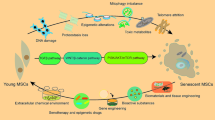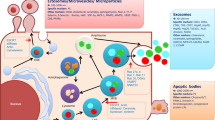Abstract
Human adipose tissue-derived stromal cells (ADSCs) are being evaluated for cardiovascular repair. We developed an ex vivo method for producing angiogenic ADSCs transduced with a self-inactivating lentiviral vector (LV) expressing the enhanced green fluorescence protein (EGFP) from an internal cytomegalovirus (CMV) promoter to track these cells after in vivo engraftment. ADSCs from visceral adipose tissue were transduced using a LV incorporating the Rous Sarcoma Virus (RSV) long terminal repeat (LTR) sequences and the Woodchuck hepatitis virus post-transcriptional regulatory element (WPRE) to enhance EGFP gene expression. We compared infection protocols with non-concentrated lentiviral supernatant or pellet fractions after ultracentrifugation, testing transduction efficiency, and reporter gene expression by quantitative flow cytometry at 5 and 28 days. Transduction of ADSCs with pellet after ultracentrifugation provided the highest transduction rate [flow cytometry titers: 6.5 ± 0.3 × 105 transduction units (TU)/mL and 20 ± 1.2 × 106 TU/mL at day 5 with non-concentrated lentiviral supernatant and pellet, respectively, with titer in the supernatant after ultracentrifugation remaining undetectable]. Reporter gene expression did not affect cell viability, morphology, proliferation, differentiation, self-renewal, or angiogenic activity. Furthermore, reporter gene expression did not significantly affect Fas/CD95-induced apoptosis. The in vivo implantation of transduced ADSCs into a mouse ischemic leg model resulted in efficient engraftment and angiogenesis. ADSC gene labeling using LVs is feasible and efficient, without impairment of stem cell characteristics, cell engraftment, and angiogenic activity. Such transduced ADSCs can be efficiently tracked in vitro and in vivo and may serve as vehicle for therapeutic genes.






Similar content being viewed by others
References
Abe, A., Miyanohara, A., & Friedmann, T. (1998). Polybrene increases the efficiency of gene transfer by lipofection. Gene Therapy, 5(5), 708–711.
Bertran, J., Miller, J. L., Yang, Y., Fenimore-Justman, A., Rueda, F., & Vanin, E. F. (1996). Recombinant adeno-associated virus-mediated high-efficiency, transient expression of the murine cationic amino acid transporter (ecotropic retroviral receptor) permits stable transduction of human HeLa cells by ecotropic retroviral vectors. Journal of Virology, 70(10), 6759–6766.
Case, S. S., Price, M. A., Jordan, C. T., Yu, X. J., Wang, L., & Bauer, G. (1999). Stable transduction of quiescent CD34(+) CD38(−) human hematopoietic cells by HIV-1-based lentiviral vectors. Proceedings of the National Academy of Sciences of the United States of America, 96(6), 2988–2993.
Chuang, C. C., Yang, R. S., Tsai, K. S., Ho, F. M., & Liu, S. H. (2007). Hyperglycemia enhances adipogenic induction of lipid accumulation: Involvement of extracellular signal-regulated protein kinase 1/2, phosphoinositide 3-kinase/Akt and peroxisome proliferator-activated receptor-g (PPARg) signaling. Endocrinology, 148, 4267–4275.
Emi, N., Friedmann, T., & Yee, J. K. (1991). Pseudotype formation of murine leukemia virus with the G protein of vesicular stomatitis virus. Journal of Virology, 65(3), 1202–1207.
Flamme, I., Breier, G., & Risau, W. (1995). Vascular endothelial growth factor (VEGF) and VEGF receptor 2 (flk-1) are expressed during vasculogenesis and vascular differentiation in the quail embryo. Developmental Biology, 169(2), 699–712.
Greenspan, P., Mayer, E. P., & Fowler, S. D. (1985). Nile red: A selective fluorescent stain for intracellular lipid droplets. Journal of Cell Biology, 100(3), 965–973.
Kanbe, E., & Zhang, D. E. (2004). A simple and quick method to concentrate MSCV retrovirus. Blood Cells, Molecules, & Diseases, 33(1), 64–67.
Madonna, R., & De Caterina, R. (2008). In vitro neovasculogenic potential of resident adipose tissue precursors. American Journal of Physiology Cell Physiology, 295(5), C1271–C1280.
Madonna, R., Di Napoli, P., Massaro, M., Grilli, A., Felaco, M., De Caterina, A., et al. (2005). Simvastatin attenuates expression of cytokine-inducible nitric-oxide synthase in embryonic cardiac myoblasts. Journal of Biological Chemistry, 280, 13503–13511.
Madonna, R., Geng, Y. J., & De Caterina, R. (2009). Adipose tissue-derived stem cells. Characterization and potential for cardiovascular repair. Arteriosclerosis, Thrombosis, and Vascular Biology, 29(11), 1723–1729.
Madonna, R., Willerson, J. T., & Geng, Y. J. (2008). Myocardin a enhances telomerase activities in adipose tissue mesenchymal cells and embryonic stem cells undergoing cardiovascular myogenic differentiation. Stem Cells, 26(1), 202–211.
Miranville, A., Heeschen, C., Sengenes, C., Curat, C. A., Busse, R., & Bouloumie, A. (2004). Improvement of postnatal neovascularization by human adipose tissue-derived stem cells. Circulation, 110(3), 349–355.
Miyahara, Y., Nagaya, N., Kataoka, M., Yanagawa, B., Tanaka, K., & Hao, H. (2006). Monolayered mesenchymal stem cells repair scarred myocardium after myocardial infarction. Nature Medicine, 12(4), 459–465.
Planat-Benard, V., Menard, C., Andre, M., Puceat, M., Perez, A., & Garcia-Verdugo, J. M. (2004). Spontaneous cardiomyocyte differentiation from adipose tissue stroma cells. Circulation Research, 94(2), 223–229.
Planat-Benard, V., Silvestre, J. S., Cousin, B., Andre, M., Nibbelink, M., & Tamarat, R. (2004). Plasticity of human adipose lineage cells toward endothelial cells: Physiological and therapeutic perspectives. Circulation, 109(5), 656–663.
Qing, K., Bachelot, T., Mukherjee, P., Wang, X. S., Peng, L., & Yoder, M. C. (1997). Adeno-associated virus type 2-mediated transfer of ecotropic retrovirus receptor cDNA allows ecotropic retroviral transduction of established and primary human cells. Journal of Virology, 71(7), 5663–5667.
Rombouts, W. J., & Ploemacher, R. E. (2003). Primary murine MSC show highly efficient homing to the bone marrow but lose homing ability following culture. Leukemia, 17(1), 160–170.
Stolzing, A., Jones, E., McGonagle, D., & Scutt, A. (2008). Age related changes in human bone marrow-derived mesenchymal stem cells: Consequences for cell therapies. Mechanisms of Ageing and Development, 129, 163–173.
Wang, Q., Steigelman, M. B., Walker, J. A., Chen, S., Hornsby, P. J., & Bohnenblust, M. E. (2009). In vitro osteogenic differentiation of adipose stem cells after lentiviral transduction with green fluorescent protein. Journal of Craniofacial Surgery, 20(6), 2193–2199.
White, S. M., Renda, M., Nam, N. Y., Klimatcheva, E., Zhu, Y., & Fisk, J. (1999). Lentivirus vectors using human and simian immunodeficiency virus elements. Journal of Virology, 73(4), 2832–2840.
Zhu, X. Y., Zhang, X. Z., Xu, L., Zhong, X. Y., Ding, Q., & Chen, Y. X. (2009). Transplantation of adipose-derived stem cells overexpressing hHGF into cardiac tissue. Biochemical and Biophysical Research Communications, 379(4), 1084–1090.
Zuk, P. A., Zhu, M., Mizuno, H., Huang, J., Futrell, J. W., & Katz, A. J. (2001). Multilineage cells from human adipose tissue: Implications for cell-based therapies. Tissue Engineering, 7(2), 211–228.
Acknowledgments
This study was supported by grants from the Istituto Italiano Ricerche Cardiovascolari (to R.D.C.); and by National Institutes of Health grants R01 HL55757, HL-70897, HL-76794, and HL78825 (to R.B.).
Conflict of interest
None.
Author information
Authors and Affiliations
Corresponding author
Rights and permissions
About this article
Cite this article
Madonna, R., Bolli, R., Rokosh, G. et al. Long-Term Engraftment and Angiogenic Properties of Lentivirally Transduced Adipose Tissue-Derived Stromal Cells. Mol Biotechnol 54, 13–24 (2013). https://doi.org/10.1007/s12033-012-9537-4
Published:
Issue Date:
DOI: https://doi.org/10.1007/s12033-012-9537-4




